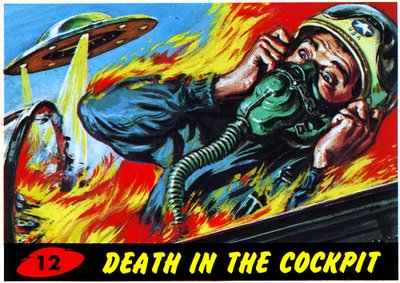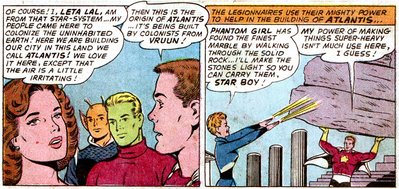Leigh's molecular machine can, he says, drive a chemical system away from equilibrium. According to the second law of thermodynamics — that a system tends towards equilibrium — this shouldn't happen.
The Demon created by jack Kirby but © DC Comics
Fortunately, Leigh's device doesn't completely blow away the laws of physics: he needs to add energy to the system by shining light on it to make it work. The added energy explains how the system can move away from equilibrium.
James Clerk Maxwell came up with his thought experiment in 1867. In it, a demon guards a door between two rooms filled with gas. Using its sprightly demonic powers, the creature could open the door when he spotted a particularly fast-moving molecule coming his way. The molecule could then pass into a room, which would become progressively hotter. Likewise, the demon could allow particularly slow-moving molecules to pass out of the warmer room and into the cooler one. By doing so, he creates a growing temperature difference, and therefore, potential energy in the system, without having expended any energy to do it (assuming our magic demon doesn't eat).
In the real world, researchers have made little devices that might be used to make a demon-like machine. One of these is a ring-shaped molecule, which is slotted onto a tiny molecular axle. The ring can move along the axle between two different sites, A and B. If left to its own devices, the normal, random movement of molecules will shunt the ring back and forth. When there are many devices, at any given time, half of them should have a ring at one site, and half at the other.
Leigh's system uses these devices, but with a twist. The middle of his axle can change shape so that it blocks the ring from moving back and forth, but only when the ring is at position A, and only when light is shone on it. If a light is shone on a number of such machines, the rings at position A will get stuck. And as time goes on, many of the rings at position B will shunt over and also get stuck at position A. From Nature.com News















